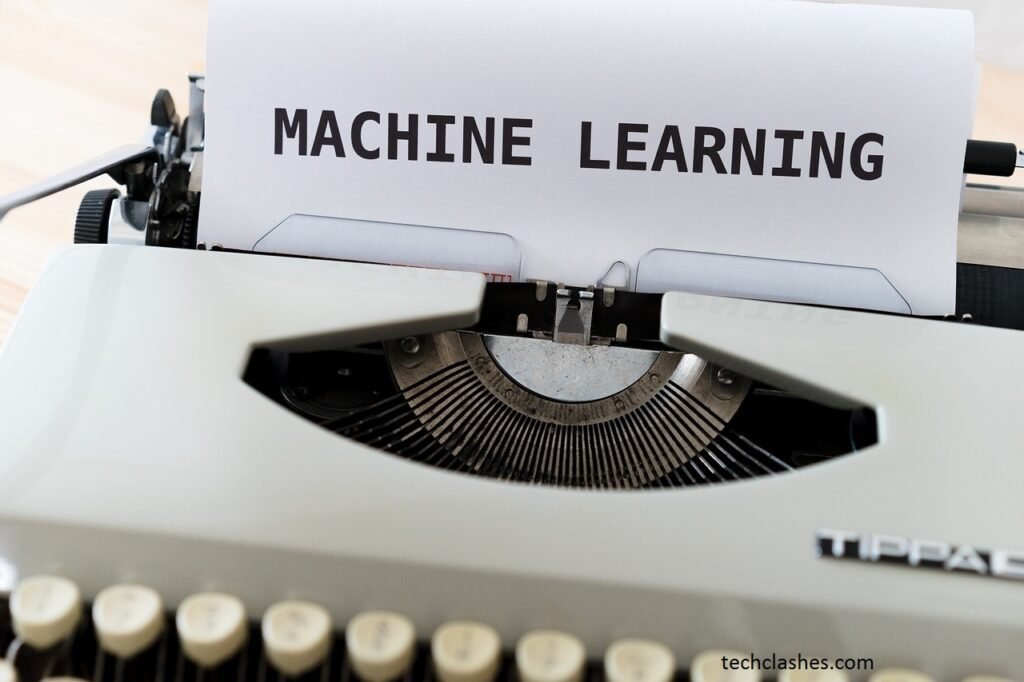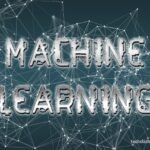In the present quickly developing Machine Learning, the ascent of AI remains a demonstration of human resourcefulness and advancement. From customized proposals on streaming stages to independent vehicles exploring our streets, the impact of AI is unavoidable, forming enterprises.
At the core of this change are AI designs, the draftsmen of canny frameworks that learn, adjust, and advance. With a profound comprehension of calculations, information, and programming, these experts are driving the charge toward a future where machines.
In this article, we dive into the domain of AI, investigating its development, and applications across different areas. Go along with us on this excursion as we disentangle the secrets behind the ascent of the machines.
Understanding the Role of Machine Learning Engineers
- Definition and responsibilities of machine learning engineers
- Importance of their role in the technological landscape
(1) Definition and responsibilities of machine learning engineers
Replicated data engineers are capable experts who have some breaking point in orchestrating, doing, and reviving imitated grasping calculations. Their fundamental commitment is to recall their clout for number modifying, examinations, and programming to connect sharp plans.
These organizers expect a focal part at each time of the man-made comprehension lifecycle, from information preprocessing and highlighting expectations. They work truly with information examiners, computer programmers, and space specialists to figure out business necessities and see authentic information.
One of the major commitments of reenacted data engineers is to pick the most genuine assessments and procedures. They are other than liable for tuning hyperparameters, Machine Learning managing model execution, and guaranteeing adaptability and sensibility in progress conditions.
(2) Importance of their role in the technological landscape
The occupation of man-made intelligence engineers holds colossal significance in the present mechanical scene, where data-driven heading and robotization. Coming up next are a couple of reasons including the meaning of their work:
Improvement and Movement:
Computer-based intelligence engineers are at the extreme forefront of driving progression and mechanical progress. By making and sending computer-based intelligence estimations and models, they enable relationships to open new pieces of information from data.
Business Change:
In a period where data is by and large viewed as the new cash, simulated intelligence engineers expect a pressing. By building insightful assessment models, proposition structures, Machine Learning, and other artificial intelligence applications, they empower relationships to make informed decisions.
Personalization and Customization:
Man-made intelligence engineers engage in modified experiences for clients across various stages and applications. Whether it’s recommending things on electronic business destinations, fitting substance using virtual amusement stages, or giving modified clinical consideration recommendations.
Efficiency and Flexibility:
Through the computerization of tedious endeavors and the improvement of cycles, computer-based intelligence engineers drive viability and versatility in affiliations. By making artificial intelligence models that can research tremendous volumes of data quickly and unequivocally, they enable associations to streamline.
Decision Help and Risk The board:
Computer-based intelligence engineers draw in pioneers with data-driven encounters and farsighted limits. By making models that can guess designs, perceive characteristics, and recognize plans in data, they help relationships by making informed.
Moral Considerations and Skilled Computerized Reasoning:
With the rising gathering of man-made intellectual prowess and simulated intelligence, moral thoughts become head. Simulated intelligence engineers expect an earnest part in ensuring that estimations are fair, clear, and dependable. They ought to determine issues like algorithmic tendency, data assurance, and the ethical consequences of robotized choice creation to manufacture reliable PC-based knowledge structures that benefit society overall.
The Evolution of Machine Learning
- Historical background of machine learning
- Major advancements leading to its current state
(1) Historical background of machine learning
The authentic foundations of AI can be followed back to the mid-twentieth century when trailblazers in software engineering and man-made brainpower laid the preparation for the field. While the expression “AI” itself was instituted a lot later, the ideas and procedures that structure the groundwork of current AI have profound verifiable roots.
Early Starting points (1950s-1960s):
The field of computerized reasoning (simulated intelligence) arose during the 1950s, with analysts, for example, Alan Turing and John McCarthy investigating the chance of making machines fit for keen ways of behaving.
In 1956, the Dartmouth Meeting denoted the authoritative birth of artificial intelligence as a field of study, uniting specialists to examine points like critical thinking, language understanding, and brain organization.
During this period, scientists grew early AI calculations, for example, the Perceptron, a basic brain network model fit for gaining designs from information.
Representative computer-based intelligence and Master Frameworks (1970s-1980s):
During the 1970s and 1980s, representative computer-based intelligence and master frameworks ruled the scene of man-made consciousness. These frameworks depended on rules and rationale to perform errands, for example, master thinking and direction.
While representative artificial intelligence showed guarantee in specific spaces, it battled with taking care of vulnerability and intricacy in genuine information.
Connectionism and Brain Organizations (1980s-1990s):
The resurgence of interest in brain organizations and connectionism during the 1980s made ready for new ways to deal with AI.
Scientists like Geoffrey Hinton, Yann LeCun, and Yoshua Bengio made critical commitments to the advancement of brain network models and learning calculations.
Regardless of starting energy, progress in brain networks dialed back in the last part of the 1990s because of computational constraints and hypothetical difficulties.
Factual Learning and Information Mining (1990s-2000s):
The 1990s saw a shift towards measurable learning approaches and information-driven techniques for AI.
Strategies, for example, choice trees, support vector machines, and outfit techniques acquired notoriety for undertakings like arrangement, relapse, and grouping.
Information mining, a subfield of AI zeroed in on removing examples and experiences from enormous datasets, arose as a noticeable area of exploration and application.
The Profound Learning Unrest (2010s-Present):
The 2010s denoted the start of the profound learning upset, filled by propels in computational power, huge information, and algorithmic developments.
Profound learning models, especially convolutional brain organizations (CNNs) and repetitive brain organizations (RNNs) accomplished forward leaps in undertakings like picture acknowledgment, discourse acknowledgment, and normal language handling.
Today, profound learning structures the foundation of many cutting-edge AI frameworks, driving advancement in fields going from medical services and money to independent driving and mechanical technology.
(2) Major advancements leading to its current state
The field of AI has gone through critical headways throughout the long term, driven by a mix of hypothetical leap forwards, mechanical developments, and expanded accessibility of information. A few key achievements have formed its present status:
Presentation of Measurable Learning Hypothesis:
During the 1990s, the improvement of the measurable learning hypothesis gave a strong hypothetical structure to understanding the standards of AI.
Ideas like regularization, experimental gamble minimization, and primary gamble minimization laid the preparation for creating powerful learning calculations with great speculation execution.
Ascent of Help Vector Machines (SVMs):
Support Vector Machines (SVMs), presented by Vapnik and partners during the 1990s, turned into a famous technique for order and relapse errands.
SVMs offer solid hypothetical establishments, high precision, and adaptability in taking care of non-straight information using part works.
Development of Gathering Strategies:
Outfit strategies, for example, Arbitrary Woodlands and Slope Supporting Machines, acquired prevalence in the mid-2000s for their capacity to work on prescient execution by joining numerous models.
These techniques influence the insight of groups by accumulating forecasts from assorted base students, prompting more vigorous and exact models.
Profound Learning Unrest:
The appearance of profound learning in the last part of the 2000s upset the field of AI, especially in the spaces of PC vision, regular language handling, and discourse acknowledgment.
Forward leaps in profound learning designs, for example, convolutional brain organizations (CNNs) and repetitive brain organizations (RNNs), empowered remarkable execution on complex assignments.
Propels in equipment speed increase, especially Illustrations Handling Units (GPUs) and specific gas pedals like TPUs, altogether sped up the preparation and derivation of profound learning models.
Extension of Support Learning:
Support learning, a part of AI worried about successive navigation, encountered a resurgence of interest during the 2010s.
Algorithmic upgrades, alongside effective applications in spaces like mechanical technology, gaming, and money, pushed support figuring out how to the front line of man-made intelligence research.
Expanded Accessibility of Information:
The expansion of advanced innovations and the web prompted a blast of information in the 21st hundred years, giving AI calculations tremendous measures of preparing information.
Huge information stages and devices, like Apache Hadoop and Apache Flash, worked with the capacity, handling, and investigation of monstrous datasets, empowering more aggressive AI projects.
Progressions in Enhancement and Regularization:
Progress in advancement calculations, like stochastic angle drop (SGD) variations and versatile learning rate strategies, further developed the preparation productivity and assembly of AI models.
Strategies like dropout regularization and clump standardization eased overfitting and further developed the speculation execution of profound brain organizations.

Applications of Machine Learning
- Healthcare
- Finance
(1) Healthcare
AI has arisen as an extraordinary power in medical care, reforming different parts of clinical practice, examination, and organization. The following are multiple manners by which AI is having a tremendous effect in the medical services industry:
Sickness Analysis and Expectation:
AI calculations are being utilized to dissect clinical imaging information, for example, X-beams, X-ray checks, and histopathology slides, to aid the early recognition and determination of sicknesses.
Profound learning models, specifically, have shown amazing precision in errands, for example, recognizing harmful sores in mammograms and distinguishing anomalies in retinal pictures for diabetic retinopathy screening.
Prescient investigation models constructed utilizing AI procedures can assist medical services suppliers with expecting the probability of specific illnesses or conditions given patient socioeconomics, clinical history, and way of life factors.
Customized Treatment Plans:
AI empowers the improvement of customized treatment plans custom-made to individual patient attributes, inclinations, and hereditary profiles.
By investigating enormous scope clinical datasets and hereditary data, AI calculations can recognize examples and relationships between hereditary markers, treatment reactions, and infection results, prompting more designated and successful treatments.
Accuracy medication drives influence AI to separate patient populaces, anticipate drug reactions, and improve treatment regimens for better clinical results.
Drug Disclosure and Advancement:
AI plays a significant part in speeding up the medication disclosure and improvement process by breaking down sub-atomic designs, reproducing drug connections, and foreseeing the viability and security of potential medication competitors.
Profound learning models can produce novel atomic plans with wanted properties, assisting drug organizations with focusing on lead compounds for additional trial and error and approval.
AI calculations are likewise used in virtual screening examines to distinguish potential medication targets and reuse existing medications for new helpful signs, along these lines diminishing time and expenses related to customary medication revelation techniques.
Clinical Choice Emotionally supportive networks:
AI-based clinical choice emotionally supportive networks give medical care experts constant experiences, proof-based proposals, and prescient examination to help with clinical navigation.
These frameworks examine electronic well-being records (EHRs), clinical pictures, genomic information, and different wellsprings of clinical data to help clinicians diagnose sicknesses, choose suitable therapies, and anticipate patient results.
By incorporating AI calculations into clinical work processes, medical care associations can work on demonstrative precision, improve patient well-being, and upgrade asset use.
Medical Care Activities and Organization:
AI applications stretch out past clinical considerations to enhance medical services activities and regulatory undertakings, like patient planning. Prescient examination models assist medical clinics and medical care suppliers with anticipating patient interest and designating staff and assets effectively. Normal language handling (NLP) and opinion investigation methods empower medical services associations to remove important experiences from unstructured information sources.
(2) Finance
AI is reshaping the scene of the monetary business, offering new open doors for information-driven direction, risk the board. This is the way AI is changing different parts of money:
Algorithmic Exchanging:
AI calculations are generally utilized in algorithmic exchanging frameworks to dissect market information, distinguish designs, and execute exchanges at high velocities.
By utilizing strategies, for example, support learning and profound learning, algorithmic brokers can foster prescient models that benefit from market failures and take advantage of momentary exchanging potential open doors.
AI-based exchanging methodologies empower monetary foundations to robotize exchanging processes, decrease exchange expenses, and upgrade portfolio execution.
Extortion Identification and Anticipation:
AI assumes a basic part in extortion identification and counteraction by dissecting exchange information, distinguishing peculiar examples, and hailing possibly. Unaided learning methods, including grouping and inconsistency location, assist with recognizing arising misrepresentation designs and adjusting to advancing extortion plans.
Credit Scoring and Hazard Appraisal:
AI models are utilized in credit scoring and chance appraisal cycles to assess the reliability of borrowers and surveys. By breaking down different information sources, for example, records of loan repayment, pay levels, and social pointers, AI calculations. Outfit learning strategies, for example, arbitrary timberlands and angle-supporting machines, are especially successful in displaying complex credit risk factors.
Client Relationship The executives (CRM):
AI empowers monetary organizations to customize client communications, expect client needs, and convey designated advertising efforts.
Client division models assembled utilizing bunching calculations assist with distinguishing particular client sections in light of segment, and social. Recommender frameworks influence cooperative sifting and content-based separating procedures to propose significant monetary items and administrations to clients.
Quantitative Money and Portfolio The executives:
AI methods are utilized in quantitative money and portfolio the board to advance speculation techniques, estimate resource costs, and oversee. Time-series gauging models, like autoregressive incorporated moving normal (ARIMA) and long momentary memory (LSTM) organizations, are utilized to anticipate. Portfolio advancement calculations, including mean-difference streamlining and the Dark Litterman model, influence AI to build differentiated portfolios that expand returns.
Conclusion
PC-based knowledge has emerged as a significant power across various endeavors, disturbing how affiliations work, make, and serve their clients. From clinical benefits to back, man-made mental ability computations are controlling data-driven courses, opening encounters, and driving efficiencies.
In clinical ideas, man-made awareness is further making difficulty end, tweaking treatment plans, and accelerating drug divulgence attempts. By separating clinical data and using sensible models, clinical benefits providers can convey more wary and convincing ideas.
Also, in finance, man-made thinking is reshaping how money-related establishments trade, focus on chance, and attract clients. Algorithmic trading systems impact man-made knowledge estimations to execute trades at lightning speed while bowing disclosure models help.
FAQs
Q.1 What ventures are embracing AI innovation?
AI innovation is being embraced across different ventures, including medical services, finance, promoting, retail, car, and assembling, among others. Its flexibility and viability in dissecting information and extricating bits of knowledge make it relevant to an extensive variety.
Q.2 What are some normal AI calculations utilized by and by?
There are a few normal AI calculations utilized practically speaking, including straight relapse, strategic relapse, choice trees, and irregular backwoods. Every calculation has its assets and shortcomings and is appropriate for various sorts of errands and datasets.
Q.3 How might organizations begin with executing AI arrangements?
Organizations can get everything rolling with carrying out AI arrangements by first distinguishing use cases and regions where AI. They ought to then accumulate and plan pertinent information, select fitting calculations, and assemble and prepare AI models.
Q.4 What are a few moral contemplations related to AI?
Moral contemplations related to AI incorporate issues like algorithmic predisposition, decency, straightforwardness, responsibility, protection, and security. AI calculations can propagate or fuel predispositions present in preparing information, prompting unreasonable or biased results. Associations must address these moral contemplations and carry out protections to guarantee that AI frameworks are utilized capably and morally.
Q.5 What abilities are expected to work in the field of AI?
Working in the field of AI requires a blend of specialized abilities, including programming (e.g., Python, R), and science. Moreover, space information and critical thinking abilities are fundamental for grasping business settings and successfully applying AI procedures to truth.



